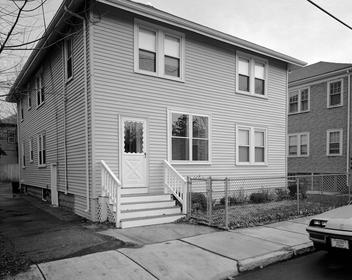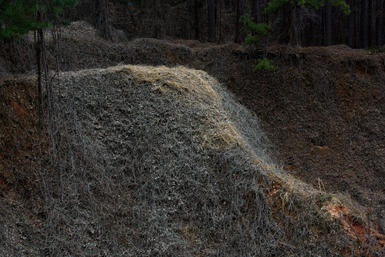The 8 x 10 Work
Most of you know what that means. For those that don't this is photographs made with an 8 x 10 inch view camera. The format has almost mystical importance in the canon that is art photography. Think Ansel Adams, Walker Evans, Edward Weston, early Harry Callahan, Frederick Sommer, Wynne Bullock, Emmet Gowin, Nick Nixon, Jim Dow, and on and on. It also is universally regarded as the most difficult of conventional film-based systems to master, for good reason. Big, cumbersome, slow, heavy, tied to a tripod and surprisingly crude it is also the single most effective tool for incredible high quality: tonality, sharpness, fidelity, depth of field and the luxury of almost limitless print sizes.
I worked, practically without exception, in 8 x 10 from 1983 until 2005: 22 years. I hauled it out west many times. I packed it on trips to Europe at least a dozen times, shot throughout the Southeast and Southwest, made numerous trips to shoot wheat fields in the Palouse in SE Washington with it and made so many exposures with it locally it's almost absurd. Called in to photograph my daughter Maru's school picture? 8 x 10. Family portraits over the years on the steps at the house in Martha's Vineyard? 8 x 10. Day field trip to the north shore with senior thesis students? 8 x 10. Quite simply, I didn't think much about whether to take it, it was my camera, the one I made my pictures with. It looked like this:

I haven't used it in years and gave it away to two young friends to share last year. Already they are making far better use of it than I was.
 Mt Saint Helen,1993
Mt Saint Helen,1993
But there is a problem. And it is this: the literally thousands of negatives made with this camera, for all intents and purposes, are not part of my oeuvre, my life's work. Why? Because they are not all printed and not all scanned. One of the cold hard facts of modern image use in art photography is that, irregardless of whether you shot with film or not, and even if you make your prints in a darkroom, with light sensitive emulsion-based papers, you still must scan the work. Me too. Want to submit to a grant? Scan your image. Want to enter a call for artists? A residency? A competition? All require jpegs made from scans. Seems unfair doesn't it? If you believe in film and its inherent qualities, you still must succumb to a digital world. I can remember a similar frustration long before digital came along. In order to submit to any of the above I needed to make 35 mm slides of my pictures shot with the Toyo 8 x 10. Talk about shrinkage! It was offensive, distasteful and wholly not representative of the care and quality of my imagery-but I did it because I had to.
 Narni, Italy, 1994
Narni, Italy, 1994
So, where does that leave me? With the daunting task, as I age, to get to work, to go through those thousands and edit down to a few, a representative sampling of 8 x 10 negatives to scan and to clean (not physically clean but to clean in Photoshop with the rubber stamp tool to remove dust and scratches, the most significant obstacle to making beautiful prints). There's also the requirement that the scans be good, really good. Does a conventional flatbed scanner like the ubiquitous Epson 750 scanner cut it? It does not. Does an oil-based drum scan at some ridiculously high dpi make it? It sure does, at great cost, requiring great skill and care so as not to destroy the original.
 Kudzu, Georgia, 1990
Kudzu, Georgia, 1990
So, what's my solution to the single largest dilemma of my creative life and work?
Stay tuned for Neal's nifty answer.


